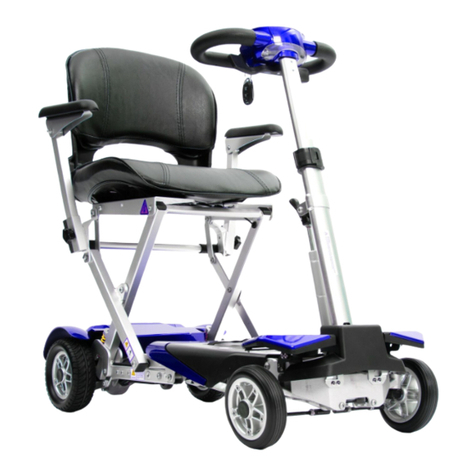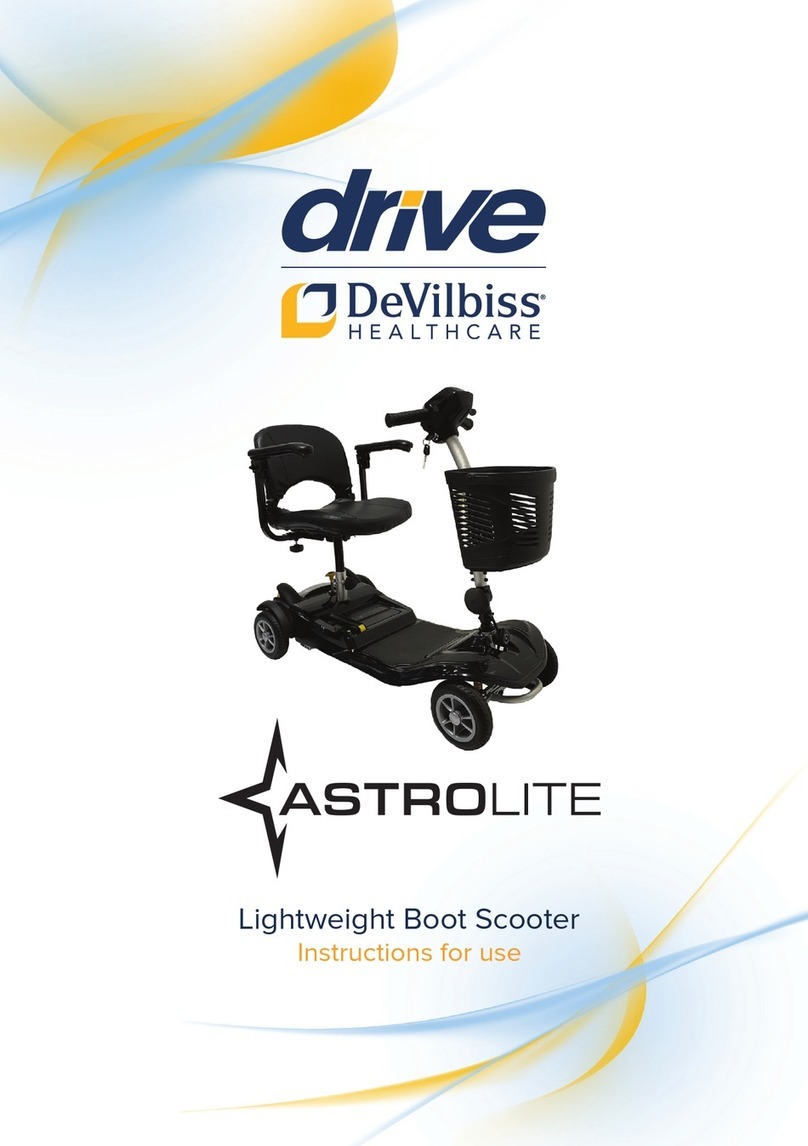ATTENTION –Quickly moving the throttle in the opposite direction of
travel will cause the scooter to come to an abrupt stop, and if held
continuously in the opposite direction may cause erratic movements if
you are unfamiliar with the controls.
Your scooter is equipped with two types of brake systems:
• Regenerative brakes – when the throttle is returned to the centre position, or
stop neutral position, regenerative brakes use electricity to quickly decelerate the
vehicle.
• Park brakes – once the scooter comes to a complete stop the park brake
activates automatically locking the drive wheels.
OUTDOOR OPERATION & INCLEMENT WEATHER PRECAUTIONS
While your scooter is purposed for in-home use to assist you in daily living
activities Drive DeVilbiss understands there are times you need to operate the
scooter outdoors and has designed it to perform superbly on level outdoor
surfaces.
ATTENTION –When operating outdoors avoid uneven terrain, soft
surfaces, tall grass, loose gravel, loose sand, fresh water, salt water,
edges of streams, lakes or oceans. If you are unsure about a surface,
avoid it.
Exposure to inclement weather should always be avoided. If you find yourself
caught in inclement weather while operating your scooter, proceed to the closest
shelter immediately. Completely dry your scooter before operating, charging, or
storing. If the scooter is used outdoors, we strongly recommend using a tiller pod
protector accessory.
PHYSICAL LIMITATIONS, Re: DRUGS, ALCOHOL & SMOKING
You must exercise awareness, caution care, and common sense when operating
your scooter. Always keep in mind your own limitations, and substance use when
operating your scooter.
WARNING –Never use your scooter while under the influence of alcohol or
mind-altering substances.
WARNING –Never smoke while seated in your scooter. Damaged or worn
upholstery increases the risk of fire hazard and should be replaced
immediately.































